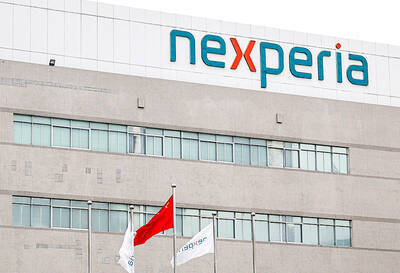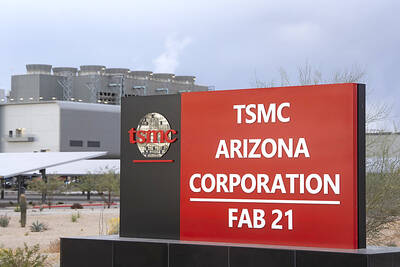New Century InfoComm (
New Century plans to offer 24 different services, including local, long-distance and international digital services by the end of this year.
But it declined to elaborate further on the nature of the 24 services.
The group is among four bidders that are vying for fixed network telecom licenses. As a whole, the four bidders have put up roughly NT$40 billion, the minimum required by government bidding rules, to invest in fixed network services as the industry deregulates later this year.
The Ministry of Transportation and Communication (
However, "That will not have any impact on our plan," said Laurence Yang (
Yang said that if the company receives the license, the public would be able to enjoy speed Internet connections as early as the end of this year.
According to a survey by Boston Consulting Group, the market is expected to grow from this year's NT$162.5 billion to NT$400 billion in 2010.
Yang said he expects fierce competition, but that New Century was prepared for the challenge.
"Although we are small now, in a hundred years, we will be an established company."
And to compete with Chung-hwa Telecom (中華電信) successfully, "We intend to provide differentiated services," Yang said.
For example, currently data transmission counts for just 5 percent of Chunghwa Telecom's revenue, compared to 50 percent for most other companies worldwide.
"We are going to build an island-wide fiber infrastructure since we are aiming at international class service," Yang said. The network would allow for faster data transmission than services available from Chunghwa Telecom, he said.
New Century's shareholders include Far Eastern Textile (
"Far Eastern Group has a sound financial basis, and local telecommunication business experience," said Sin Hang Boon (
SingTel has 15 bases worldwide and cable lines that are connected to the US, Japan and China. Once New Century is up and running, telephone users will be able to dial directly their friends in more than 200 countries via the international network.

JITTERS: Nexperia has a 20 percent market share for chips powering simpler features such as window controls, and changing supply chains could take years European carmakers are looking into ways to scratch components made with parts from China, spooked by deepening geopolitical spats playing out through chipmaker Nexperia BV and Beijing’s export controls on rare earths. To protect operations from trade ructions, several automakers are pushing major suppliers to find permanent alternatives to Chinese semiconductors, people familiar with the matter said. The industry is considering broader changes to its supply chain to adapt to shifting geopolitics, Europe’s main suppliers lobby CLEPA head Matthias Zink said. “We had some indications already — questions like: ‘How can you supply me without this dependency on China?’” Zink, who also

The number of Taiwanese working in the US rose to a record high of 137,000 last year, driven largely by Taiwan Semiconductor Manufacturing Co’s (TSMC, 台積電) rapid overseas expansion, according to government data released yesterday. A total of 666,000 Taiwanese nationals were employed abroad last year, an increase of 45,000 from 2023 and the highest level since the COVID-19 pandemic, data from the Directorate-General of Budget, Accounting and Statistics (DGBAS) showed. Overseas employment had steadily increased between 2009 and 2019, peaking at 739,000, before plunging to 319,000 in 2021 amid US-China trade tensions, global supply chain shifts, reshoring by Taiwanese companies and

Taiwan Semiconductor Manufacturing Co (TSMC, 台積電) received about NT$147 billion (US$4.71 billion) in subsidies from the US, Japanese, German and Chinese governments over the past two years for its global expansion. Financial data compiled by the world’s largest contract chipmaker showed the company secured NT$4.77 billion in subsidies from the governments in the third quarter, bringing the total for the first three quarters of the year to about NT$71.9 billion. Along with the NT$75.16 billion in financial aid TSMC received last year, the chipmaker obtained NT$147 billion in subsidies in almost two years, the data showed. The subsidies received by its subsidiaries —

Shiina Ito has had fewer Chinese customers at her Tokyo jewelry shop since Beijing issued a travel warning in the wake of a diplomatic spat, but she said she was not concerned. A souring of Tokyo-Beijing relations this month, following remarks by Japanese Prime Minister Sanae Takaichi about Taiwan, has fueled concerns about the impact on the ritzy boutiques, noodle joints and hotels where holidaymakers spend their cash. However, businesses in Tokyo largely shrugged off any anxiety. “Since there are fewer Chinese customers, it’s become a bit easier for Japanese shoppers to visit, so our sales haven’t really dropped,” Ito